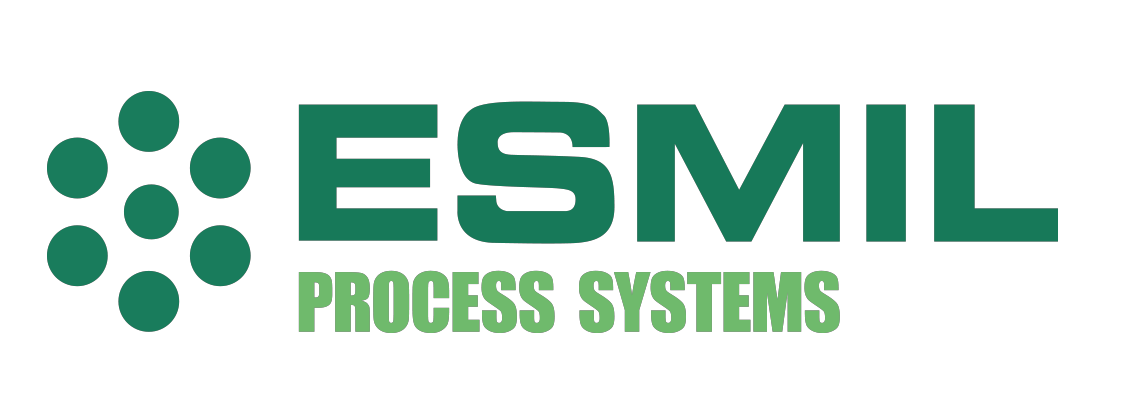Introduction
Esmil Process Systems were tasked by a large landfill operator to provide a holistic process solution for the reduction/elimination of soluble COD in a leachate stream currently discharged to sewer. The process stream in question was the effluent from a nitrified SBR (Sequencing Batch Reactor), which had the following important chemical properties as per Table 1.
Table 1 - Physico-chemical properties of untreated landfill leachate
| Property | Units | Typical values | Comment |
|---|---|---|---|
| pH | 8.0 – 8.5 | ||
| Conductivity | μScm-1 | 16000 - 18500 | |
| COD | ppm O2 | 1250 - 1550 | |
| Nitrates | mgl-1 as NO3-1 | 1480 - 1600 | Typical for nitrified SBR |
| Alkalinity | mgl-1 as CaCO3 | 900 - 1000 | |
| TSS | mgl-1 | 150 - 200 |
Another important consideration for the client was the measured UV transmittivity of the final stage treated effluent discharged to sewer. This stream was treated with UV light downstream at a separate facility to effect disinfection prior to final discharge. Process determinands of primary concern to the client were thus COD removal and UV transmittance of the final effluent stream, as well as a thorough characterisation of the final stage concentrate stream.
Process
Landfill leachate sample was collected at site for treatment at Esmil’s technical laboratory where chemical analysis, chemical pre-treatment and membrane treatment of the sample could be processed. A 150 litre sample was passed through a 50 micron bag filter to remove gross contaminants and then chemically pre-treated (coagulation & flocculation) and allowed to settle. The resultant filtrate was then processed through an Ultrafiltration (UF) membrane unit to remove residual solids and large macro-molecules prior to treatment through Nanofiltration (NF). After nanofiltration, the resultant permeate and concentrate streams were analysed. Esmil engineers were required to perform a number of pre-treatment process iterations to achieve the required client specifications.
Case History
Both sets of membranes (UF & NF) were selected on the basis of previous experience of landfill leachate effluents. Process data was accumulated during the sample runs to ascertain specific flux rates (J, lm-2h-1) which will inform the subsequent membrane plant design. Cleaning tests were performed on all membranes after each run to determine whether the membrane element flux rates could be easily regained.
Typical results and process data are tabulated below.
Table 2 - Landfill leachate treatment process data
| Parameter [units] | Raw Sample | Ultrafiltration permeate | Nanofiltration permeate | % reduction |
|---|---|---|---|---|
| pH | 8.1 | 7.5 | 7.2 | nm |
| Conductivity [mS/cm] | 16 | 14.4 | 6.1 | 62 |
| COD [ppm O2] | 1120 | 770 | 130 | 88 |
| Nitrates [mgl-1 as NO3-1] | 1780 | 68 | 25 | 98 |
| TDS [ppm] | 8400 | 7200 | 6100 | 38 |
| Zinc [ppm as Zn] | 9.0 | 5.4 | 0 | 100 |
| UV Transmittance [%] | nm | nm | 65 | nm |
It may be seen that the process designed and implemented by Esmil Process Systems produced a 88 % reduction in soluble COD and elimination of heavy metals (as measured by Zinc) and nitrates from the effluent stream. An important determinant, UV transmittivity was successfully achieved which ensures that downstream disinfection can be efficiently managed.
After processing, both membrane sets were easily cleaned, regaining initial flux values after 12 hours run and no impact on membrane integrity was discerned.
Conclusions
The treatment of landfill leachate utilising a bespoke Esmil process and membrane systems successfully delivered an effluent stream which met client specifications.







